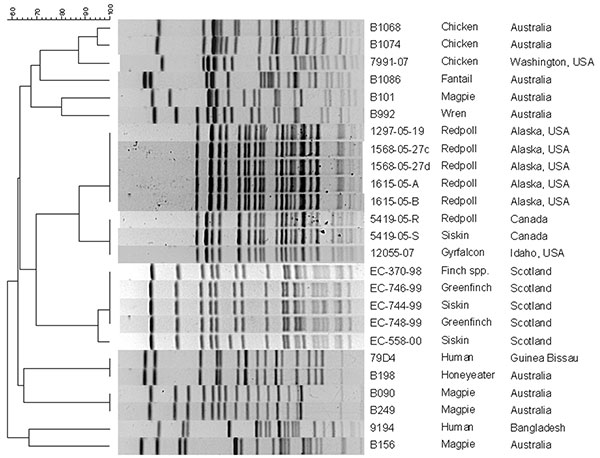Volume 16, Number 4—April 2010
Research
Escherichia albertii in Wild and Domestic Birds
Figure 3

Figure 3. Dendrogram (unweighted pair group method with arithmetic mean) of Escherichia albertii isolates from birds, based on pulsed-field gel electrophoresis band profiles. Isolates from disease outbreaks in Alaska and Scotland form clonal groups, indicating that these outbreaks are associated with expansion of a single clone. The profiles for the other isolates indicate that the bird and human E. albertii isolates are heterogeneous and do not segregate on the basis of host, geographic origin, or disease status. Scale bar indicates percent similarity.
Page created: December 23, 2010
Page updated: December 23, 2010
Page reviewed: December 23, 2010
The conclusions, findings, and opinions expressed by authors contributing to this journal do not necessarily reflect the official position of the U.S. Department of Health and Human Services, the Public Health Service, the Centers for Disease Control and Prevention, or the authors' affiliated institutions. Use of trade names is for identification only and does not imply endorsement by any of the groups named above.